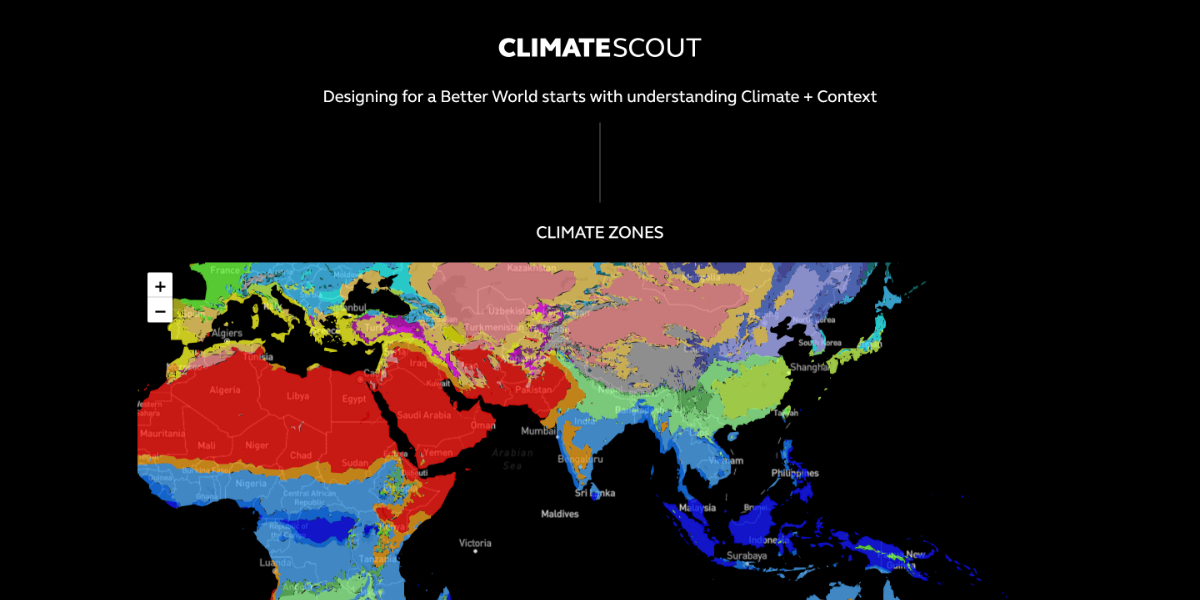AWARD YEAR
2023
CATEGORY
Home
GOALS
Good Health & Well-being, Industry, Innovation & Infrastructure, Sustainable Cities & Communities, Climate Action
KEYWORDS
architecture, climate data
COUNTRY
United States of America
DESIGNED BY
CallisonRTKL
WEBSITE
https://www.callisonrtkl.com/climate-scout/
CLIMATE SCOUT
Helps its users design buildings that respond to a site by providing climate-specific design advice.
How does it work?
CLIMATE SCOUT helps its users design buildings that uniquely respond to a site by providing climate-specific design advice at the building scale. It uses the Köppen-Geiger climate classification and building scale design strategies from Architecture 2030’s Palette to achieve this. This system classifies climate into five main classes and 30 sub-types. The five main climate groups are A (tropical), B (dry), C (temperate), D (continental), and E (polar). 27 building scale strategies taken from the 2030 palette are paired with the 30 climate subtypes to determine their applicability for each of the Köppen-Geiger climates. Users can filter out, select, and combine appropriate strategies for a selected climate. As the user selects these curated strategies, they appear in real-time overlaid in diagrammatic form, providing an immediate visual connection between climate and building response.
Why is it needed?
Most climate analysis tools effectively visualize climate data and quantify the effect of some strategies on thermal comfort. Still, they do not provide a visual image of these strategies integrated into an architectural response. CLIMATE SCOUT provides a more integrated and coherent vision of the design strategies working in unison.
Using data and images, CLIMATE SCOUT connects climate with architecture to help users create better performing, responsive buildings.
How does it improve life?
CallisonRTKL’s vision for the future is designing a better place for all. Understanding climate and developing an appropriate architectural response is one of the first steps in our design process.





